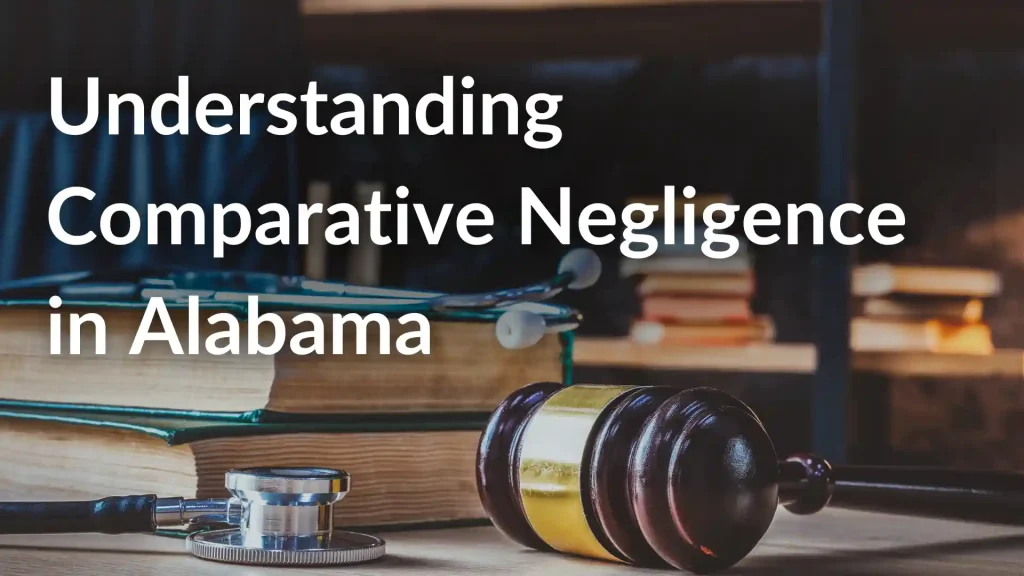Posted on Thursday, May 1st, 2025 at 9:00 am
 After a car accident in Alabama, determining who pays for collision-related losses depends entirely on how fault is assigned. Alabama follows a unique and strict approach to fault determination that differs significantly from most other states in the country, which apply the doctrine of comparative fault negligence premises in car accidents. This approach affects everything from insurance claims to personal injury lawsuits, especially in states that use comparative negligence in car accidents, where fault is shared.
After a car accident in Alabama, determining who pays for collision-related losses depends entirely on how fault is assigned. Alabama follows a unique and strict approach to fault determination that differs significantly from most other states in the country, which apply the doctrine of comparative fault negligence premises in car accidents. This approach affects everything from insurance claims to personal injury lawsuits, especially in states that use comparative negligence in car accidents, where fault is shared.
What Is Comparative Negligence?
Comparative negligence is a legal principle that allows injured parties to recover damages even when they share some responsibility for a common cause of the accident. Under this system, compensation gets reduced by the plaintiff’s percentage of fault.
Most states across the country use one of two types of comparative negligence:
- Pure comparative negligence allows recovery regardless of your percentage of fault, even if you are 99 percent responsible for the accident, with compensation reduced accordingly.
- Modified comparative negligence permits recovery only when your fault falls below a certain threshold (typically 50 percent or 51 percent), with damages reduced by your percentage of responsibility.
In car accidents where multiple drivers share blame, comparative negligence systems provide a more balanced approach to compensation. For example, if you suffered $100,000 in accident-related losses but were found 30 percent at fault, you could still recover $70,000 under a comparative fault system.
How Comparative Negligence Affects Compensation
The impact of comparative negligence rules on compensation can be substantial. Insurance companies use the shared fault percentages when calculating settlement offers, directly affecting the money injured parties receive.
When determining fault in car accidents, insurance adjusters evaluate:
- Traffic laws that each party may have violated
- Witness statements
- Police reports
- Physical evidence from the accident scene
- Expert analysis when necessary
The adjuster’s fault evaluation process leads to percentage assignments directly influencing compensation amounts. This process often involves negotiation between parties about the exact percentages of responsibility.
Alabama’s Approach: Contributory Negligence
Here’s the crucial information Alabama residents need to understand: Alabama does not use comparative negligence. Instead, our state follows the much stricter contributory negligence doctrine.
Under Alabama’s contributory negligence rule, if you contributed to a fault for an accident in any way – even just 1 percent – you cannot recover compensation. This makes Alabama one of only five jurisdictions in the United States (along with Virginia, North Carolina, Maryland, and the District of Columbia) still following this harsh standard.
This stark difference between negligence laws from one state to the next creates significant challenges for Alabama accident victims seeking compensation. The fault determination process becomes even more critical since any shared fault in car accidents could completely bar recovery. It’s essential to understand comparative negligence in car accident claims and how it may impact your case, especially if your car accident claims exceed insurance limits, making recovering full compensation more complex.
The Harsh Reality of Alabama’s System
Consider this scenario: You suffer serious injuries when another driver runs a red light and hits your vehicle. The damages total $200,000 in medical bills, lost wages, and pain and suffering. However, the investigation determined that you drove five mph over the speed limit.
In most states using comparative fault in car accidents, you might be found 10 percent at fault, reducing your recovery to $180,000. But in Alabama, that same 10 percent fault means you recover nothing, despite the other driver bearing most of the responsibility.
This harsh reality makes personal injury claims settlements with shared fault particularly challenging in Alabama. Insurance companies know they only need to prove you were partially responsible, even minimally, to avoid paying any compensation.
Exceptions to Alabama’s Contributory Negligence Rule
Alabama law does recognize limited exceptions to the contributory negligence doctrine:
- Children under 14 cannot be found contributorily negligent due to their age.
- Individuals with specific mental disabilities may be exempt from contributory negligence rules.
- The “sudden emergency doctrine” protects those who acted reasonably when faced with an emergency.
- The “last clear chance doctrine” may apply when the other party had the final opportunity to prevent the accident.
These exceptions provide potential pathways to compensation in situations where strict application of contributory negligence would otherwise prevent recovery.
How to Protect Your Rights After an Alabama Accident
 Given Alabama’s strict fault rules, taking these steps after an accident becomes essential:
Given Alabama’s strict fault rules, taking these steps after an accident becomes essential:
- Gather evidence immediately by taking photos and videos of the accident scene from all angles and capturing images of any injuries.
- Identify witnesses whose testimony can help establish that your actions did not cause the accident.
- Never admit to any potential responsibility, even in casual conversation (i.e., do not say “I’m sorry” when speaking to other drivers or law enforcement).
- Do not give recorded statements to insurance adjusters without first speaking to a lawyer, as anything you say could be interpreted as admitting partial fault.
- Consult with an experienced attorney who can protect you from unwarranted claim denials under Alabama’s unforgiving system.
The Importance of Legal Representation
Compensation under comparative negligence systems available in other states simply doesn’t exist in Alabama when shared fault occurs. Alabama’s strict contributory negligence standard makes professional legal representation essential after accidents. The insurance claim process becomes a high-stakes battle, where proving the complete absence of fault is the only way to secure compensation.
Accident victims who attempt to represent themselves may face considerable disappointment. Working with a skilled Alabama car accident lawyer makes you much more likely to avoid an unfair outcome. An experienced personal injury attorney will understand how to counter strategies to report accidents to insurance companies that use to claim shared responsibility. They also know how to effectively document the other party’s complete fault while protecting you from claims of contributory negligence.
Have You Suffered Injuries in a Car Accident in Alabama? Contact Farris, Riley & Pitt, LLP Today
Understanding how fault works in Alabama accident cases can make the difference between receiving fair compensation and walking away with nothing. The state’s contributory negligence standard creates significant challenges for injury victims that most Americans in comparative negligence states don’t face.
If you’ve suffered injuries in an accident in Birmingham or anywhere in Alabama, don’t face these challenges alone. At Farris, Riley & Pitt, LLP, our experienced car accident attorneys in Alabama understand Alabama’s strict fault rules and know how to build cases that protect your right to compensation. Our team is here to help you understand your rights and take the first step toward securing the necessary benefits. Contact Farris, Riley & Pitt, LLP today at (205) 324-1212 for a free consultation to discuss your case.















